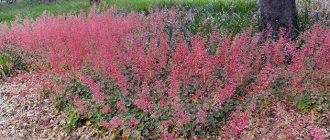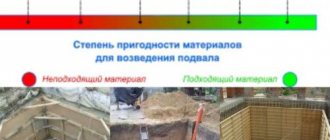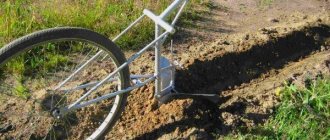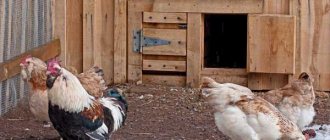August has arrived and the apples are starting to bloom in the garden.
And under their heavy burden, the branches of individual apple trees are leaning more and more towards the ground, and even then they will not be able to support the weight and cracks and breaks will appear in the tree.
There is nothing to be done, the garden then needs immediate help in order to keep the branches and twigs safe and sound without losing the harvest.
And if the apple tree is also excellently fruit-bearing and the fruits on it are of excellent quality, it is even more impossible to lose it.
It is better
to take care in advance about the safety of the fruit-bearing branches of the apple tree before they become too heavy and break under the weight of ripening apples.
As supports for apple trees, it is allowed to use both ordinary poles, planks, thin humps, poles, sticks, and specific structures: plastic and metal-plastic pipes.
Types of supports for apple trees with your own hands
Carefully! Do not use sticks or poles that have not been tested for strength; it is better to find something long that is metal. For when the support breaks, the entire branch of the apple tree will break off from the trunk!
Stand with slingshot
Simple stands for apple tree branches - in the form of rogulin , from “horned” branches from the forest - this is the simplest device for supporting overloaded apple tree branches.
And so that it does not spoil the layer of bark on the apple tree, rubber tubes cut lengthwise from an old garden hose or bicycle tire are pulled over it.
A more advanced idea on how to support the branches of an apple tree: connect a plank and a piece of wood from a flyer. The board is placed down, and an overloaded branch of an apple tree is placed on the flyer in the shape of the letter U, then the flyer is attached with two screws to the thick board underneath so that the end of the flyer does not sink into the ground.
This way the supports for the apple tree branches will be of the required length. And it is best to attach pieces of hoses of a suitable diameter to the slingshot, and if they are not there, then wrap them with rubber. After picking apples, the wooden supports should be put away in the barn or under the roof, because they will come in handy more than once and will work longer.
IMPORTANT ! To prevent apple trees from being overloaded with apples, some of the ovaries are removed by vigorous shaking.
In this video, watch how to make supports for apple trees with your own hands. An experienced gardener shares his secrets.
Umbrella chat
It is allowed to use supports for apple trees by tying the branches to a specific central support pipe (or pole) dug close to the trunk of the apple tree.
Wire “strings” already extend from it, which are attached to the branches of the apple tree through loops or branch rings.
These can be parts of old tires, branches are placed in them. To install such a support along an apple tree branch, you definitely need a garden stepladder.
The central stand of the support for the branches of the apple tree itself should be 35-45 cm higher than the tree being tied up and steel or plastic “support strings” are already attached to it, and the branches are tied to their end through rubber rings or other devices similar to them.
But how to support the branches of an apple tree if its trunk is twisted or the type of tree is small? In this case, a kind of “mast” : an iron pipe or a strong plastic pole, the length of which will be equal to the tree or slightly higher.
But first, at one end of the “mast” (which will be at a height), a circle of strong steel wire is strengthened.
The opposite end of the “mast” is buried quite deeply into the soil. Apple tree branches with softening pads are tied to the upper ring using ropes or pieces of soft wire (wires in insulation). Assembling the “mast” and tying the branches is done with four hands to ensure an even load on the tree and to balance the entire structure.
It is allowed to use the following as gaskets to protect the bark layer on apple tree branches from friction defects:
- Elastomer;
- Rubber bandage;
- Tire tubes;
- Pieces of hoses;
- Dilapidated tires from a scooter or moped.
They are cut across the ring into 10 cm fragments and in each such fragment a pair of holes is punched at the edge. After this, a section of the tire is applied to the shoot from below (the holes should be on top). A wire or wire from the “mast” is threaded through the holes and tied in a knot.
Advice. This device remains under the apple tree for the winter and works throughout the whole year, protecting the branches of apple trees from breaks and splinters during strong winds and after heavy snowfalls.
Supports in the form of a ladder
There is also a type of support installation, which is more like a ladder or a shelf. Two sticks similar to “J” are placed on both sides of the apple tree trunk at a distance of half a meter.
The lower points of the sticks are even and deepened by 10-12 cm , and they are fastened together at several points with sticks and a “staircase” is obtained. Apple tree branches are attached to sticks supported by soft wire or wire.
There is no need to tie this “ladder” to the trunk if the branches grow evenly throughout the entire crown. The branches placed in different directions play the role of “guy wires”, due to which the entire structure gains stability.
Some gardeners use 3 or 4 poles instead of two . This configuration is really hardy, and it’s more convenient to use for a small garden. And if the crossbars are made strong, then it will really stand in place of any ladder.
How to support apple trees is up to the gardener to determine. But logically, for those apple varieties that are distinguished by systematically abundant fruiting , it is better to install fixed supports that will last for several years.
And for varieties with small and irregular fruiting , as well as for young trees, it is wiser to use temporary supports, when it is possible to quickly place them under a certain branch and, again, quickly remove them.
Telescopic support
For such a support, it is necessary to purchase plastic or metal-plastic water pipes of such diameters that one pipe easily fits into another .
Having inserted them, drill holes in two pipes at the same time with a diameter of half to one centimeter (depending on size).
This is necessary in order to more easily adjust their height as needed. Next, after the desired height , you need to insert bolts with nuts of the required diameter into these holes and tighten them.
Having bought plastics in the form of planks and heated them, bend them so that fragments similar to the letter “C” come out. Fix them flat at the end of thin pipes and stick softening material on the inside (for example, buy thermal insulation and cut it).
Collect everything and place it under the branches of the apple tree.
The second option is a pipe mount. Duralumin pipes in the form of a “matryoshka doll”. The smaller one ends with hooks at one end, and the second edge is placed in a larger pipe.
TIP: To obtain the required length, the pipes are spread apart, twisted and fixed. For this purpose, holes are drilled in them at equal intervals, into which bolts or locking wedges are inserted.
The diameter of small pipes is half an inch, large ones are 3/4 or 1 inch. The configuration of the hooks makes it possible not only to bend or bend the branches of apple trees, but also to throw nests of moth caterpillars off them and get rid of mummified apples.
The “thickness” of the rolled steel wire for these hooks is up to 1 centimeter.
T-shaped support
It is obtained by connecting two poles with the letter “T”. And if the branches of the apple trees are large and full of harvest, then this “structure” is also fixed by nailing 2 more crossbars at both edges at an angle - from the edge of the crossbar to a vertical post.
Then they bring this support under the branch, trying to position the structure so that its “main” burden falls on the support.
A perpendicular pole is placed in a hole to a depth of 15 cm and then buried. If necessary, install several supports.
Reliable supports for apple trees are quadrangular pyramids. With them it is possible to unload heavy branches of an apple tree at any height.
To make such a pyramid, you need to install two pairs of trapezoids under the apple tree opposite each other.
The distance between the frames themselves should be the same as the distance between the lower ends of the frame posts. This way you will get a neat quadrangular pyramid. The upper ends of the frames are tilted and fastened. The branches of apple trees with ripening apples are laid on them .
TIP: There is also a way to support an apple tree: A thick, strong pole is cleared of bark and placed close to the trunk, deepened by 17-20 cm. Next, take the end of a thick natural rope or thin rope, fix it on the top of the placed pole, and the other The end of the rope is wrapped around the desired branch of the apple tree with a locking knot. This design can unload up to 6 apple tree branches .
Metal supports for apple trees
It is necessary to especially carefully monitor the condition of the branches of adult apple trees, especially if they are loaded with apples, and urgently take measures to support them. This is tying the branches to the supports and placing supports under the branches, and connecting the branches to the trunk and to each other.
Metal supports are the most durable . These supports can be made independently from metal pipes of any diameter, but this will undoubtedly be more expensive and the mass will be considerable. Using used pipes, you can significantly reduce the cost, and by using aluminum as a base for the pipes, the weight itself. And most importantly, guess the length of the supports.
How to properly make supports for an apple tree:
- Cut off the pipes at approximately half the required length;
- Drill a few holes;
- By setting the smallest diameter pipe with a “fork” attached on top to the required height;
- by aligning the holes and strengthening them with a thick nail driven through, they obtain support.
TIP: Initially, supports are installed (especially in areas unprotected from strong winds) under the upper, and then under the lower branches of those apple trees that bear fruit first (summer), and then under the winter apple trees.
In this video, watch how to make stands for apple tree branches. Professional recommendations.
Types of supports
Tree supports can come in a wide variety of varieties. Their main task is to support the branches of the tree. It is also important to prevent their breakdowns and injuries. All types of supports must meet safety requirements during use. Ease of installation and dismantling, the ability to independently install such a support and make it yourself are also important advantages of this option for protecting trees from crown overload.
Rohatina
The simplest type of pores under branches is a horn. As the name implies, it is a Y-shaped structure. Thanks to it, the main load on the branches is removed. Such a support for garden trees can be purchased or made by yourself.
ATTENTION!!!
Avoid slings that are too narrow. The branch should fit freely in it without feeling cramped. Otherwise, its ability to form and ripen fruits will decrease. The angle of the fork should be proportionate to the size of the branch.
The spear should be installed at a slight angle to the trunk. And the main load of the branch should fall precisely on the corner of the fork.
If the spear is installed too close to the trunk, then the risk of breaking the branch remains. If installed too far, a crack may form.
Umbrella support
An interesting option for supporting a fruit tree is an umbrella support. It consists of the following elements:
- vertical pole made of metal or wood. It should be strong, straight, the size of a tree or slightly taller than it;
- A ring is attached to the upper end of the pole. Guys made of wire or rope are attached to it;
- Guys are then strengthened on the branches with the largest number of ovaries. Or on branches that are twisted and do not have sufficient support;
- To prevent injury from the guy wire, a gasket is attached to the branch.
This type of tree support will be the most compact and aesthetically pleasing. The umbrella support does not interfere with gardening work. You can also install it in the spring. An important advantage of this option is the durability of the structure. It will remain for several years. You can understand that with its help the tree is protected from wind and snow loads.
Spring is the time to protect trees from damage by insects and diseases. However, some protective procedures can be performed during the summer period. For example, treating wood with creolin will be an excellent way to preserve its health. You can study this topic at the following link.
How to raise a fallen apple tree?
After bad weather, an apple tree fell . To determine the possibility of its “reanimation”, it is worth knowing the answer to several questions:
- How old is the apple tree?
- In what part of the trunk did the fracture occur?
- What happened - did the trunk split, broke completely, or is it still hanging on to a fragment of wood?
- How much time has passed since this happened?
- Is it thickly covered with apples that are not yet fully ripe?
- Is it possible to leave the tree like this and wait for the apples to ripen?
If the apple tree is young and not completely broken , then you can save the apples on it, but it is better to decide how to strengthen the apple tree and remove the apples themselves, otherwise the tree will die from overstrain.
Watch the video on how to help a cracked apple tree: step-by-step algorithm.
If the tree is uprooted from the soil and this happened no more than a couple of hours ago, then it is necessary to raise the entire tree to the maximum possible from its previous height and support it with supports.
Further, if the root core and trunk are intact, then in this case it is necessary to throw a pile of highly nutritious loose soil onto the large-rooted part so as to completely cover all the “dislocated” roots with soil.
Afterwards, protect this hillock with shields from erosion by rainfall. Constantly water it with fertilizers for seedlings to supply the roots with easily digestible nutrition. Read more about fertilizing apple trees during fruit ripening here.
Further, if active growth becomes noticeable , then let the tree remain growing in this position and the gardener will have an apple tree with a horizontal or crooked crown.
But if the flake is more than 2/3 of the diameter of the apple tree trunk or it occurred a long time ago, then it is pointless to connect and save the crop, only removing the flaked part, painting over the entire wound with red lead and natural drying oil and nursing the remaining living branches.
Be sure to remove all apples!
How to strengthen branches from splinters?
Heavy fruiting, strong gusts of wind or large amounts of snow are often the main causes of branches splitting.
And this is bad both for this very tree and for the volume of harvest both this and next year.
The simple remedies described below will help you avoid splitting branches on how to raise the branches of an apple tree.
Supports for a young apple tree.
Do not tighten the branches too much; a pinched branch may dry out!
Why do branches crack and break?
Fractures are dangerous because at the site of the crack, part of the trunk bark breaks off and a difficult-to-heal wound is formed. The following factors may cause this problem:
- lack of wind protection in the garden area;
- fragility of wood in some varieties of fruit trees;
- errors when forming and pruning the crown.
The last reason is one of the most significant. For example, if during pruning of a young tree skeletal branches were left, extending from the trunk at an acute angle (40 degrees or less), sooner or later a crack will appear at the tops of these angles. As a result, part of the harvest is lost, and the crown becomes one-sided.
Splinter protection rings
The main task of the gardener at the end of summer is to help the growing apple trees maintain a bountiful harvest of apples on their branches.
For under its yoke and with strong gusts of wind, not only heavy branches break off from apple trees, but even the trunks of apple trees split.
Protective rings made of a strong iron can help protect an apple tree from splintering branches .
They are pulled in the spring until the buds bloom exactly in the middle of the crown.
In order not to harm the bark of the branches in the areas of contact with the hoop, it is necessary to cover the iron with an elastomer: an ordinary tensile rope, or, in extreme cases, rags.
The ring itself can small caliber steel hooks To make this whole installation look neater, it would be nice to paint it with oil paint.
TIP: It is very rational to tie the twigs and branches of an apple tree using thick wire and screws with rings attached to them. These self-tapping screws are screwed into the trunk and into the apple tree branches from the outside, keeping a centimeter to the cap. Then the steel wire is threaded through the rings and the branching of the apple tree is fixed.
Ladder
This design is shaped like a ladder, made of 2-3 poles with cross bars. It is quite stable, not afraid of gusts of wind, but very cumbersome.
Construct a support ladder according to the following scheme:
- first, the staircase structure itself is made;
- then they bring it under the desired branch, which is lifted and placed on the top crossbar;
- install the structure at an angle, deepening the lower ends into the ground;
- the branches are tied to the top crossbar to prevent slipping and abrasions.
Related article:
How to root cuttings of conifers in winter
Depending on the width of the crossbar, several adjacent branches can be tied to one collection. If the structure is strong enough, then in the future it will be used as a regular ladder for harvesting.
Arc support of branches
Often apple trees produce such a bountiful harvest that their branches, unable to withstand the mass of apples, begin to burst. To avoid this, gardeners place arc supports in the crown.
To do this, cut out pieces of thick rubber from a conveyor belt or tractor tires and fix them on the branches, and between them (upper and lower) arcs of either stainless or thick steel wire are placed.
“cocoon” emerges . If the branches are small, rubber from a bicycle inner tube will suffice.
The protective material is cut with a hacksaw or chopped with an ax, and a sharpened slate nail is used to punch holes in the rubber.
Arcs can also be placed in a position from 35 to 56 degrees from the plane.
Carefully! Never support the edges of apple tree branches or just their base! Do not lift the branches themselves too much and do not disturb their original position.
What are supports needed for?
The relevance of tree supports increases towards the end of summer. It is during this period that the plants thank them for their careful care of their harvest. And the more abundant the harvest, the more pleasant it is to watch the heavy branches.
However, if the harvest is capable of damaging the tree, this is already a danger! And tree support will help prevent this possibility. In addition, support for trees will also prevent bark breakage. Cracks in the bark are dangerous for plants. After all, then pests can get inside the trunk. As well as pathogenic bacteria, which will cause tree disease. And if there is insufficient attention to it, it will lead to death.
ATTENTION!!!
Tree supports become most important as summer approaches. In August, the harvest ripens on their branches. However, even in winter the topic of support will be relevant. After all, snow build-ups on trees can break their branches. And in wet weather the snow becomes especially heavy. Therefore, tree supports should always be on hand.
Trellis and ring or rim
But the most complete way to preserve the harvest for “column apple trees” and dwarf apple trees is only by tying them to a trellis. This method will solve many problems: broken and splintered shoots, thickening of the crown, low resistance to snow in winter and rain and wind in summer. It will also increase productivity, increase the quality and even the taste of apples.
The trellis is made of thick wire, fixed on poles along the edges of the line, or an individual structure made of wire rod.
The branches and branches of the apple tree onto the trellis with natural twine, sponge or plastic clips.
Stand for an apple tree - trellis.
TIP: A good “stand” for small-sized and spreading apple trees is considered to be a hoop from a bicycle wheel, which is fixed on 3-4 pegs made from pipe scraps under the crown of the tree. And as a softening material for the delicate bark of the twigs, a foam rubber band is used, wrapped around the rim and secured with ordinary electrical tape.
If the apple tree has grown greatly, then you need to knock down a rim-ring with 5 “spokes” from thick strip iron and strengthen it on 4 pillars from pieces of pipes.
Before attaching branches to it, such a structure should be painted with oil paint, and then wrapped either in matting or in a thick layer of old agrofibre. (To create a soft layer that will not damage the bark by friction and will not allow the iron to “burn” the bark both when heated in the summer and when it is frozen in the winter.)
Rohatina
The easiest way to support a heavy branch is with a long stick with a forked end. Such a spear can be found in the forest by choosing a suitable shoot with a large angle of divergence of the “horns”, into which a fruit branch will fit well. The “horns” must be cleared of bark and wrapped in cloth or pieces of hose put on to prevent abrasions. The lower end should be pointed to make it easier to stick into the ground.
Related article:
There are many cherry flowers - but few fruits
The disadvantages of slingshots include:
- the ability to maintain only one branch;
- low stability, probability of collapse under gusts of wind;
- an unaesthetic appearance that spoils the picture of the garden.
You don’t have to look for such support in the forest. It can be built from boards or welded from metal pipes. To give greater stability, the spear is reinforced with additional spacers. They are driven in at an angle and attached to the base.











